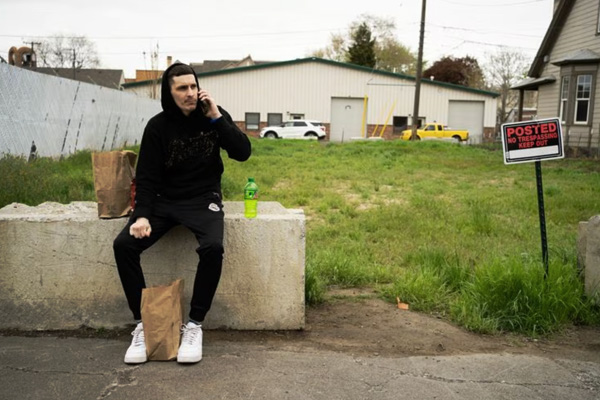AUDIO – IT’S COMPLICATED –
June 17, 2023 – Earlier that morning, he had walked out of Umatilla County jail, past a family of bunnies snacking on the manicured lawn, crossed the parking lot and entered the parole and probation offices for a cognitive behavioral therapy class led by his parole officer. In a plastic bag under his arm, Hamilton carried a Bible and four Ashley & JaQuavis books about a drug cartel in Miami.
“Stuff like that still entertains me, but it’s not something that I want to be a part of anymore,” Hamilton said.
The books he carried were among the 42 he read over the past 36 days he’d spent in jail for a parole violation — he had briefly, and without permission from his parole officer, moved to Portland.
That morning, Hamilton had been sober for just over two months. This was his fourth attempt at kicking a fentanyl habit that snuck up on him the same way it has so many Americans: an injury and a prescription.
“Snapped my right foot in four places and they prescribed me Oxycontin. That was it for me,” he said. “I did it for about three months and then they pulled my prescription and then everything I could find on the street was fentanyl laced.”
Addiction, particularly to opioids, is maddeningly persistent. Getting someone into treatment often only happens after multiple encounters with equally persistent service providers. Motivations for staying in recovery vary, but fear of incarceration seldom tops the list.
Up until 2020, police and the courts would often interact with people with addictions who ran afoul of the law. But when Oregon voters decriminalized drugs through Measure 110, the criminal justice system lost a lot of its power to coerce people into treatment. For more than two years since, courts have oftentimes not been able to force people into treatment.
In May 2017, Hamilton was one of 1,483 people arrested on a drug possession charge in Oregon. Five years later, in May 2022, that number had plummeted to 176 arrests. In the same time, fentanyl seizures in Oregon and Idaho increased from 27 doses in 2018 to 32 million in 2022, a 118 million percent increase.



